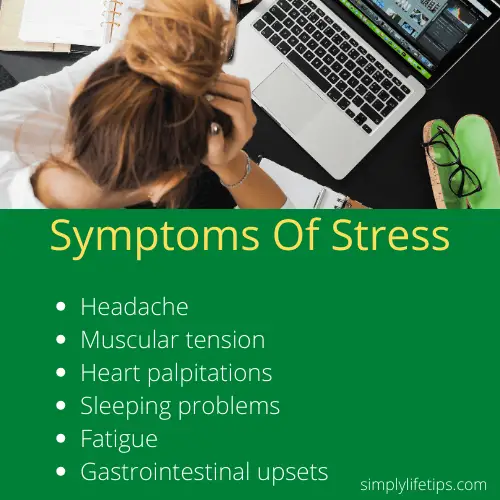In the fast-paced and demanding world of today, workplace stress has become an almost ubiquitous companion. From tight deadlines and heavy workloads to interpersonal conflicts and the constant pressure to perform, managing workplace stress has become an essential skill for professionals across all industries. The ability to effectively handle stress not only improves one’s overall well-being but also enhances job satisfaction and productivity. In this blog, we embark on a journey to explore the strategies and techniques that can help individuals tackle workplace stress head-on, promoting a healthier, more balanced, and harmonious work environment. Join us as we delve into the art of stress management and discover how to navigate the challenges of the modern workplace with poise and resilience.
Workplace Stress
The modern workplace is a breeding ground for stress, with its relentless demands, high expectations, and interpersonal challenges. It’s a scenario familiar to many: the burden of heavy workloads, the frustration of uncooperative colleagues, and the difficulties that can arise when dealing with management. Navigating workplace stress can indeed be a daunting task, leaving many feeling overwhelmed and drained. But take heart; solutions are within reach.
What Are The Symptoms Of Stress?

- Headache
- Muscular tension
- Heart palpitations
- Sleeping problems
- Fatigue
- Gastrointestinal upsets
Read Easy Ways To Get Better Sleep At Night
What Causes Stress In The Workplace?

Unmasking The Roots Of Workplace Stress
In the labyrinth of the modern workplace, stress often lurks around every corner, casting its shadow on the professional landscape. Understanding the origins of workplace stress is the first step toward effectively addressing this pervasive issue. Some of the common causes include:
- Poor Communication with Co-workers: Ineffective communication can lead to misunderstandings, conflicts, and a sense of isolation, all of which contribute to heightened stress levels.
- Fear of Job Insecurity: The constant fear of being laid off or facing job insecurity creates a pervasive undercurrent of stress that can be emotionally and mentally draining.
- High-Level Decision-Making: Roles that require constant decision-making and bear the weight of significant responsibility can be mentally taxing, leading to increased stress levels.
- Excessive Workload and Overtime: Overburdening employees with heavy workloads and endless overtime not only compromises work-life balance but also elevates stress.
- Lack of Support: When employees do not receive adequate support from co-workers, supervisors, or management, they can feel abandoned and overwhelmed.
- Performance Pressure: The pressure to consistently meet the expectations of management can create a chronic state of stress, as individuals strive to prove their worth.
- Recognition and Reward Deficiency: Despite hard work, the absence of recognition and rewards can lead to feelings of undervaluation and contribute to workplace stress.
- Lack of Control: Feeling powerless or lacking control over one’s work and responsibilities can lead to heightened stress levels, as individuals grapple with a sense of helplessness.
6 Tips For Successful Decision Making In The Workplace
Understanding these underlying causes is crucial in addressing workplace stress. In the upcoming sections, we will delve into practical strategies and solutions to mitigate these stressors, fostering a more harmonious and balanced work environment.
As per CCOHS, There is no one cause of stress in the workplace. Every worker is an individual with their professional and personal lives bringing different factors that may influence their reactions to conditions in the workplace.
Read 7 Workplace Communication Mistakes That Can Damage Your Career
10 Ways To Manage Workplace Stress

Navigating The Rapids Of Workplace Stress
Workplace stress is not to be underestimated. It can manifest in various forms, from mild to severe, and its effects can permeate both our physical and emotional well-being. The toll it takes on our health, including elevated blood pressure and diminished self-esteem, underscores the importance of proactively addressing and managing stress in the workplace. By recognizing the signs and implementing stress-reduction strategies, individuals can mitigate its adverse effects and foster a healthier, more balanced work environment that nurtures well-being and productivity.
Toxic Workplace Behaviours: Causes, Impact And Solutions
Workplace stress can be a relentless adversary, but it’s not an unconquerable one. Armed with the right strategies, you can navigate the challenges of the modern workplace and reclaim your peace of mind. Here are ten essential tactics to help you master the art of managing workplace stress:
- Spot the Signs Early: Tune in to your body and mind, and be vigilant for any changes in your behaviour, health, or emotional well-being that could signal the onset of stress.
- Identify Key Triggers: Cultivate self-awareness by pinpointing the specific situations, tasks, or individuals that tend to trigger stress for you. Knowledge is power.
- Keep an Eye on What’s Going On: Reducing uncertainty can diminish stress. Stay informed about workplace changes, policies, and developments that affect you.
- Break Out of the Norm: Routine can breed complacency. Introduce variety and new challenges into your work to keep things fresh and engaging.
- Don’t Be Afraid to Say What You Want: Effective communication is a powerful stress-reducer. Clearly express your needs, boundaries, and expectations to colleagues and supervisors.
- Look After Yourself Always: Prioritize self-care through a balanced diet, regular exercise, and adequate sleep. These are your pillars of resilience against stress.
- Manage Expectations: Be realistic about what you can accomplish. Keep your commitments, manage your time efficiently, and communicate clearly about your capabilities and limitations.
- Ask for Feedback: Regularly seek input on your performance to gauge your progress and identify areas for improvement. Knowing where you stand can alleviate uncertainty.
- Think Positively: Combat stress-inducing negative thoughts with positive affirmations. Acknowledge your abilities, appreciate your accomplishments, and practice gratitude.
- Accept That You Cannot Control Everything: Release the burden of trying to control every aspect of your work environment. Focus your energy on what you can influence, and let go of the rest.
With these strategies at your disposal, you can effectively manage workplace stress, foster resilience, and create a more harmonious work environment where your well-being takes centre stage. Remember, you hold the power to not only confront stress but also conquer it, one step at a time.
As per the Help Guide, Sometimes the best stress-reducer is simply sharing your stress with someone close to you. The act of talking it out and getting support and sympathy—especially face-to-face—can be a highly-effective way of blowing off steam and regaining your sense of calm. The other person doesn’t have to “fix” your problems; they just need to be a good listener.
Manage Workplace Stress With Physical Exercises – Infographic
The significance of physical activities in the journey to overcome mental health issues cannot be overstated. Relying solely on medication is insufficient for the recovery process. Engaging in regular physical exercise plays a pivotal role in addressing challenges such as stress, depression, and other mental health concerns. Below, you’ll find an infographic that illustrates the profound impact of physical activity in combatting workplace stress and fostering mental well-being.
Infographic Credits: visually
Final Thoughts
In modern life, workplace stress emerges as a formidable challenge, casting shadows on our physical and mental well-being. Yet, through awareness, resilience, and proactive strategies, we can unravel its grip on our lives. It is a journey where self-care takes centre stage, where open communication bridges gaps, and where the healing power of physical activity paves the way to mental well-being. As we navigate the complexities of the professional world, let us remember that while stress may be a part of the landscape, it need not define our destinies. With these tools in our arsenal, we can step confidently toward a future where stress is no longer the protagonist of our story, but rather a fleeting cameo in the grand narrative of our lives.
Recommended for further reading
Do you have workplace stress?
What do you do when you feel stressed at work?
I appreciate your visit. I trust you found the post enjoyable.
Remember, Sharing Is Caring! Feel free to share this post on your social media and other networks to help others discover it.
PVM

Mathukutty P. V. is the founder of Simply Life Tips. He is a Blogger, Content Writer, Influencer, and YouTuber. He is passionate about learning new skills. He is the Director of PokketCFO.
He lives with the notion of “SIMPLE LIVING, CREATIVE THINKING”. He Believes – “Sharing is caring.” and “Learning never ends.”




